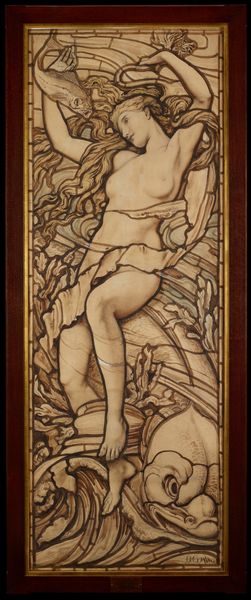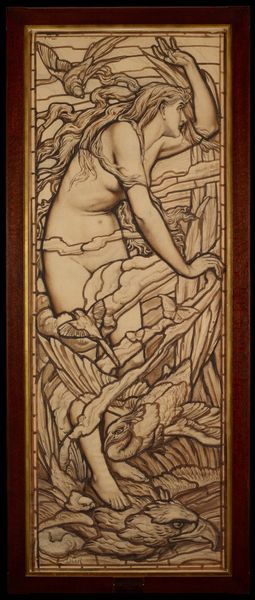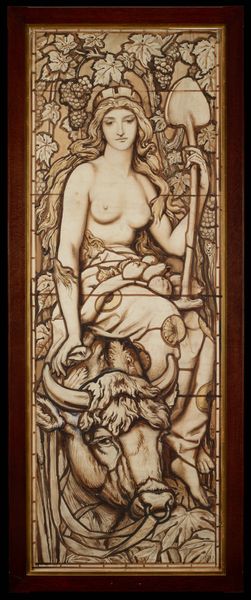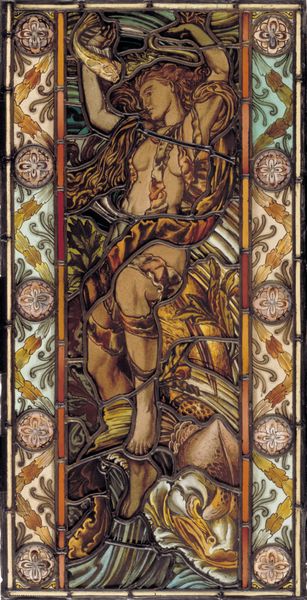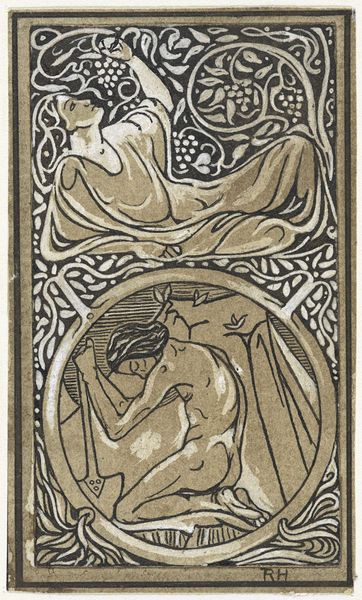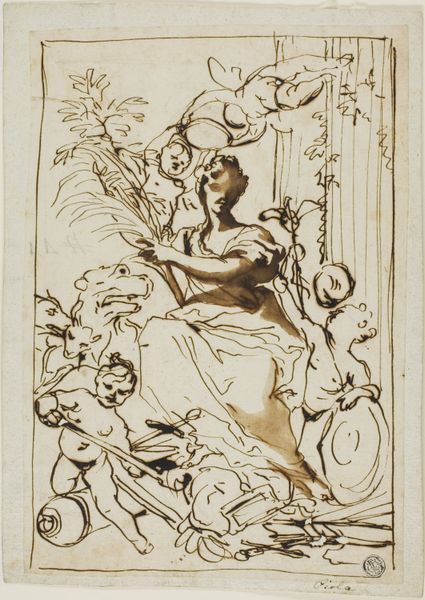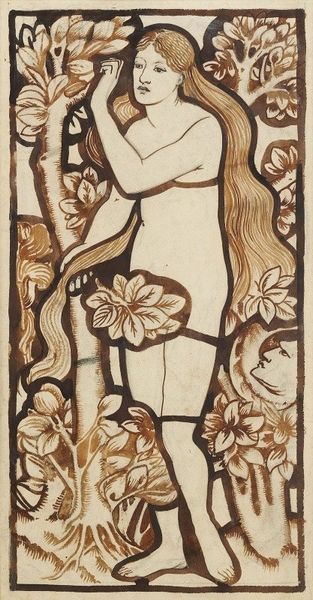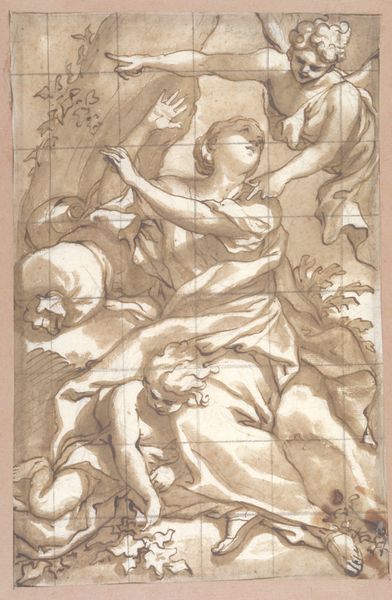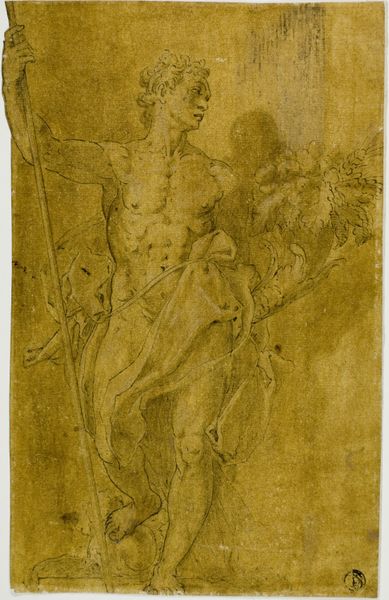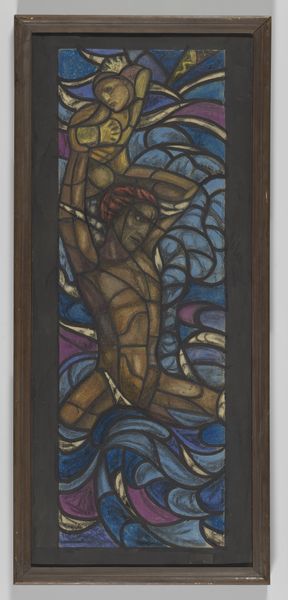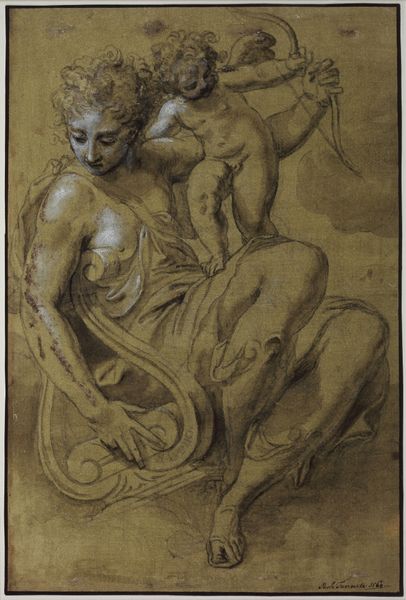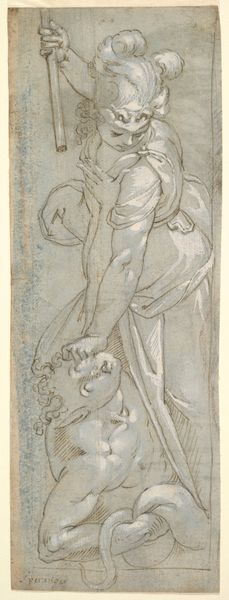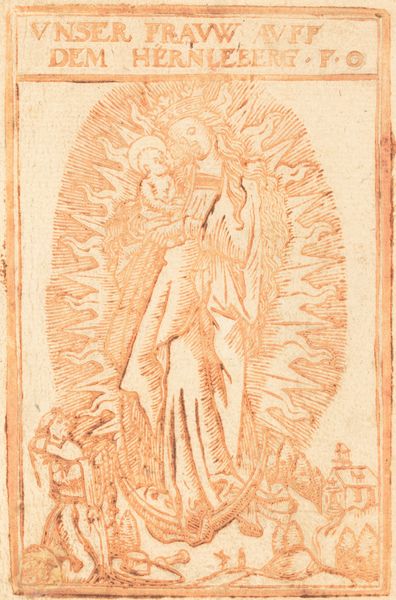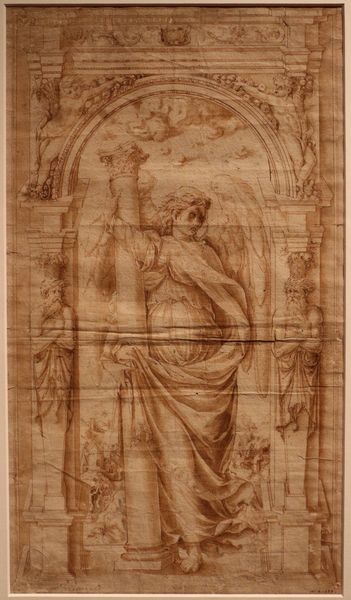
drawing, ink
#
drawing
#
art-nouveau
#
ink painting
#
figuration
#
ink
#
symbolism
#
nude
#
watercolor
#
erotic-art
Dimensions: 70 5/8 x 24 7/8 in. (179.39 x 63.18 cm)
Copyright: Public Domain
Curator: I'm drawn in by the monochromatic drama. It’s so evocative, a little like a sepia photograph capturing a potent dream. Editor: Precisely. Let’s delve into Frederick G. Smith's "Fire," an ink drawing created around 1888 or 1889, currently held at the Minneapolis Institute of Art. We see a figure—nude, powerful—confronting a dragon. Curator: A powerful goddess perhaps? She’s certainly the focal point, radiating agency even in her partial nudity. The chains in her hand suggests domination. I see her lamp shining brightly. It might signal hope? Editor: Indeed, the dragon's subjugation is pivotal here. Considering the time it was created, its Art Nouveau stylings, and its overt eroticism, it’s challenging the visual vocabularies around gender, power, and representation. There are feminist undertones worth mentioning when one considers her triumphant poise and the binding of what is, effectively, a phallic symbol of brute force. Curator: I'm more intrigued by the way Smith evokes fire, and not through the standard color palette, but rather using lines, negative space, and symbol-laden composition. It’s the *idea* of fire—raw, passionate, but also purifying. Editor: Right! It invites the viewers to interrogate traditional concepts of female vulnerability, sexual representation, and social power—it feels daring, to imagine such a confident portrayal in that historical moment. Curator: Absolutely! Her unyielding gaze reinforces the feeling of defiant command over this primordial force. Smith really uses the female nude not just as a subject for admiration, but as a symbol of power. Editor: Smith clearly understood the potential of visual language as a tool of subversion, challenging established gender roles and erotic expression within a transforming world. This makes it just as relevant today. Curator: This drawing truly is so compelling; I find myself questioning all that I know about symbolist era art, really feeling the flames licking at the expectations. Editor: Me too! I walked away from the experience considering the implications this interpretation has on how we study and understand Art Nouveau in modern scholarship.
Comments
minneapolisinstituteofart about 2 years ago
⋮
The attribution of this impressive stained glass design, along with its three companion drawings in Mia's collection (10.1, 10.2, 10.4), has been a century-old puzzle. The large-scale cartoons, representing the four elements, were acquired in 1910 as the work of the famous British Pre-Raphaelite painter Dante Gabriel Rossetti (1828-1882). This attribution was based on the spurious monogram "D.G.R" inscribed at the lower edge of each of the drawings. Over the years, other artists' names have been proposed—Frederic James Shields (1833-1911), Henry Holiday (1839-1927)—but no consensus among experts was found. In December 2015, exactly 105 years after the drawings were given to the museum, the identity of the artist was recovered. The cartoons are the work of the British artist Frederick G. Smith. Peter Cormack, the noted scholar of British and American stained glass, tracked down Smith and also identified the project for which they were produced, the grand staircase at Avery Hill, in southeast London. Smith was a partner of the London firm Campbell, Smith, & Co., and he likely executed these cartoons between 1888 or 1889 when the house was being reconstructed by Colonel John T. North. The stained glass was completed by 1890, but Avery Hill was badly damaged during World War II. In 1982 the museum acquired a stained glass panel directly related to the series, representing the allegory of Water (81.92). The provenance is not known. The glass is roughly half the size of the drawing. It may have come from Avery Hill, or perhaps Campbell, Smith & Co. executed multiple versions of Smith's designs.
Join the conversation
Join millions of artists and users on Artera today and experience the ultimate creative platform.
